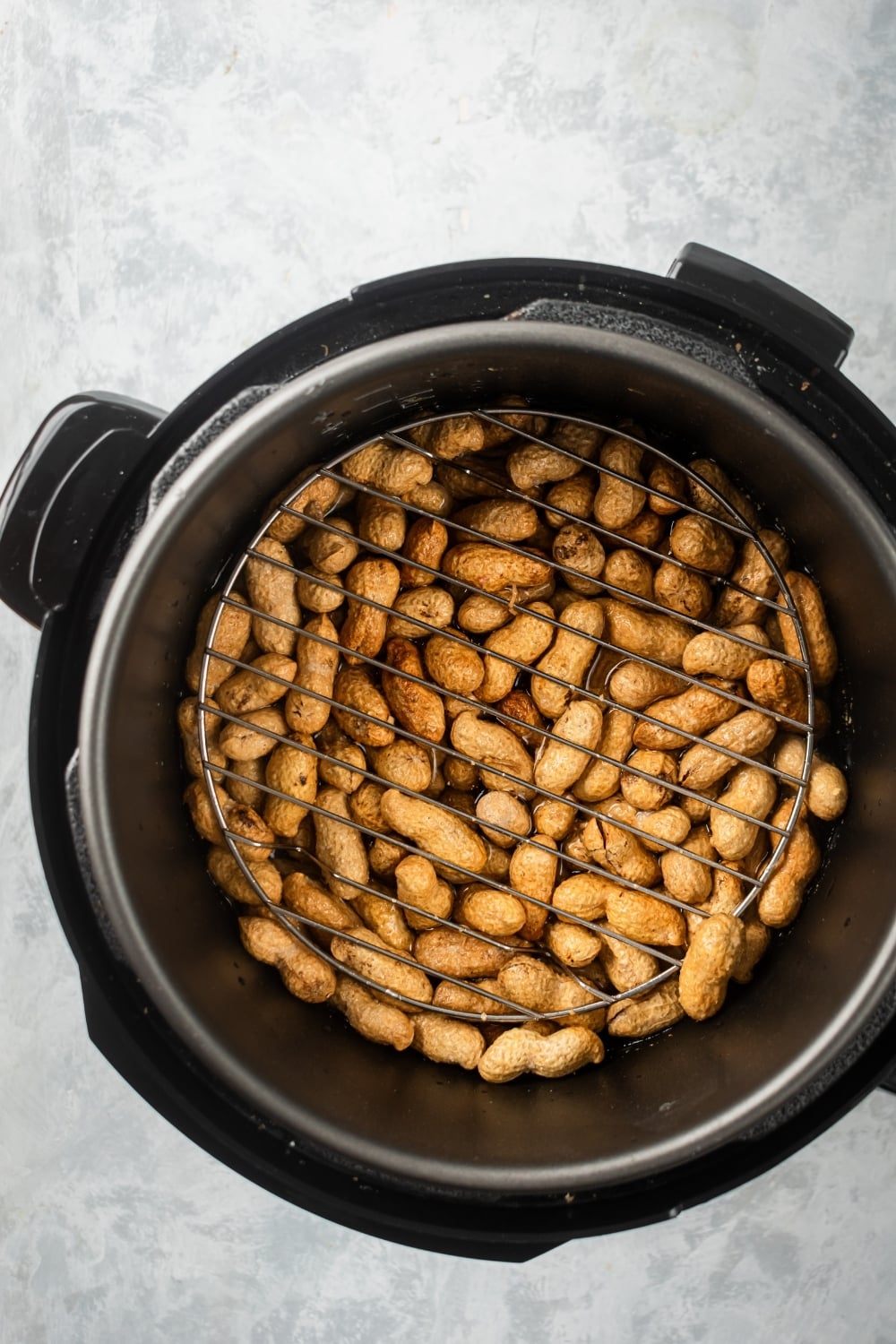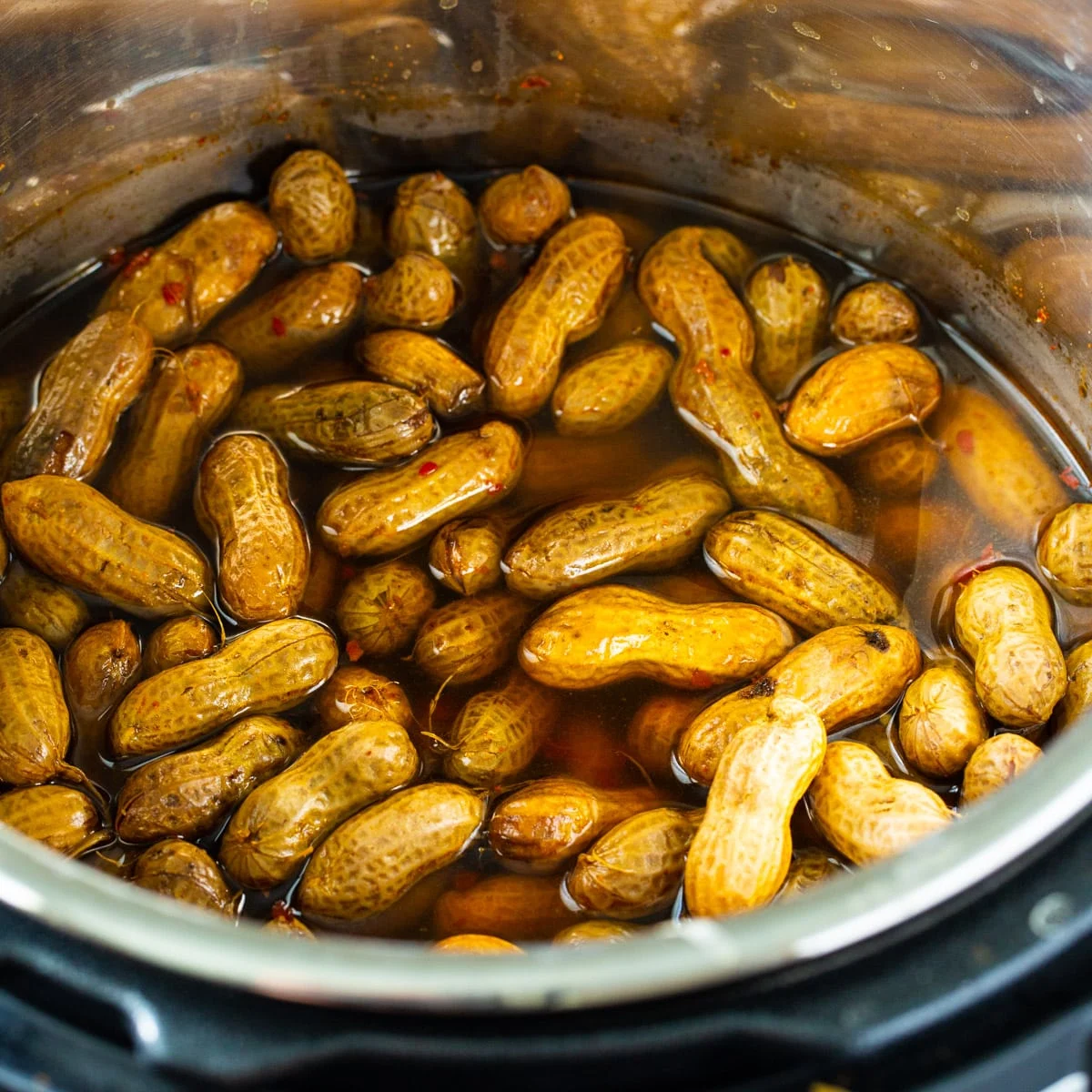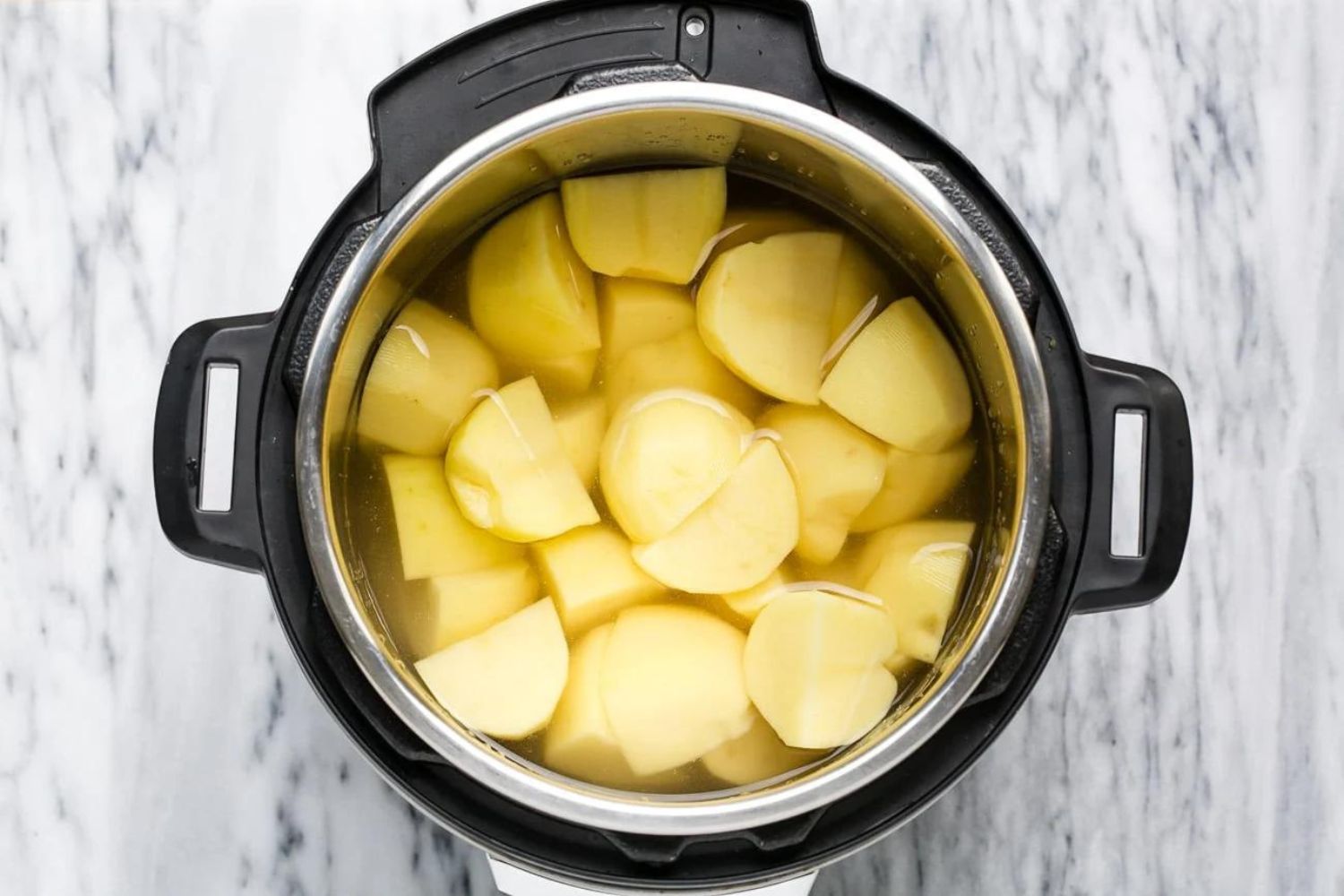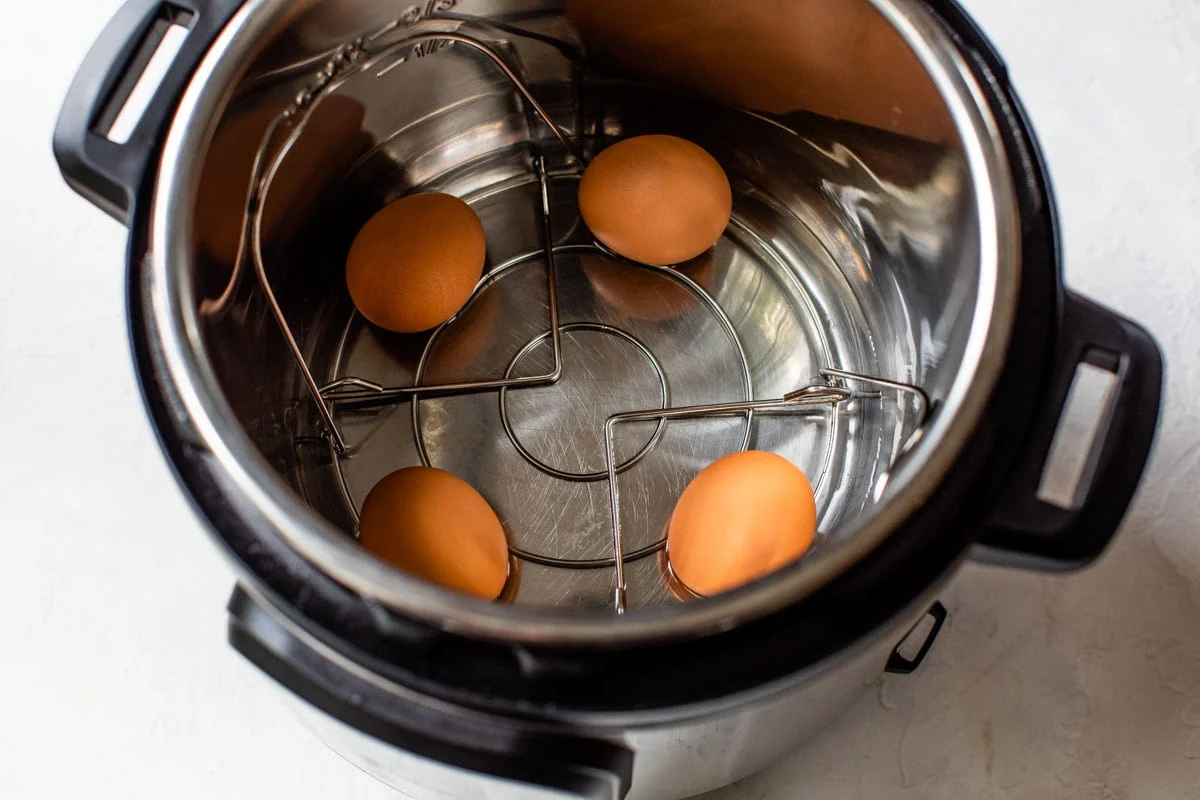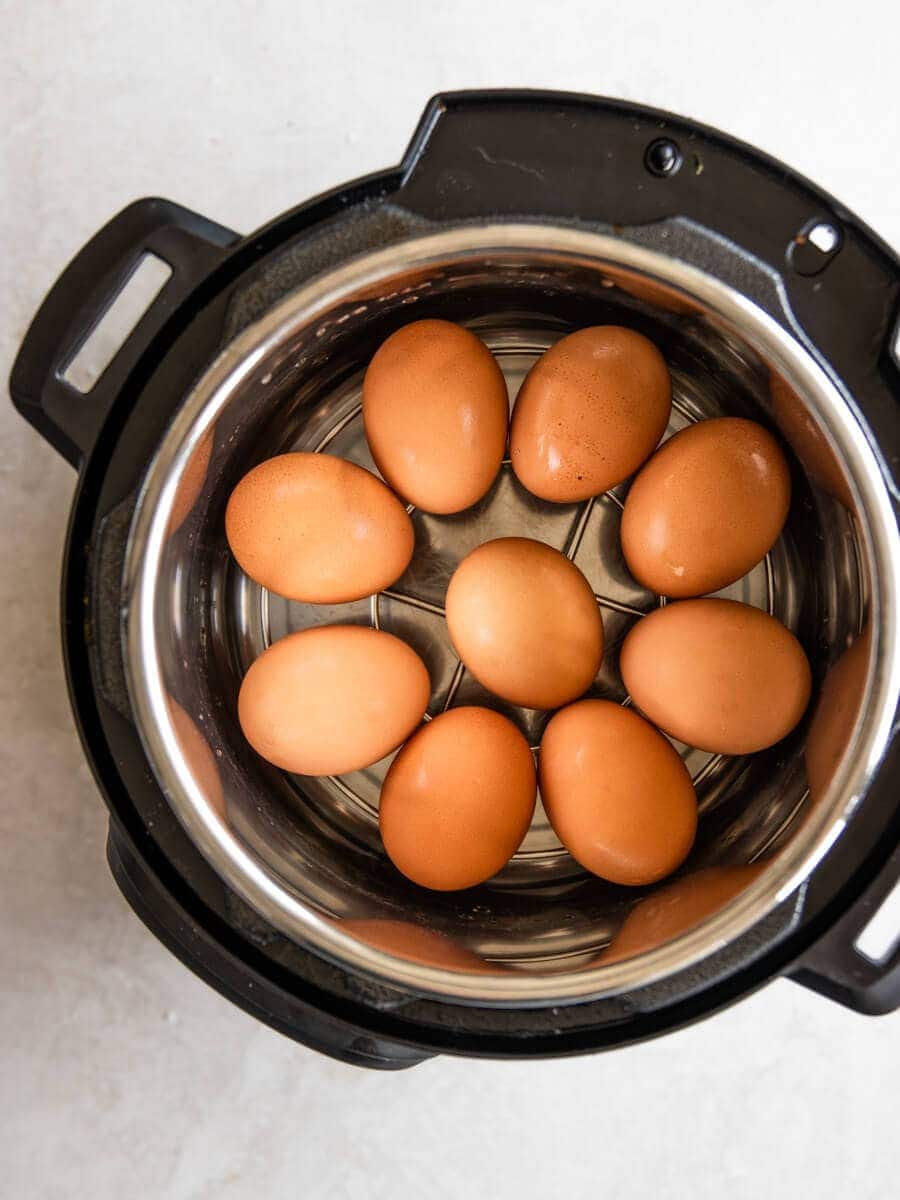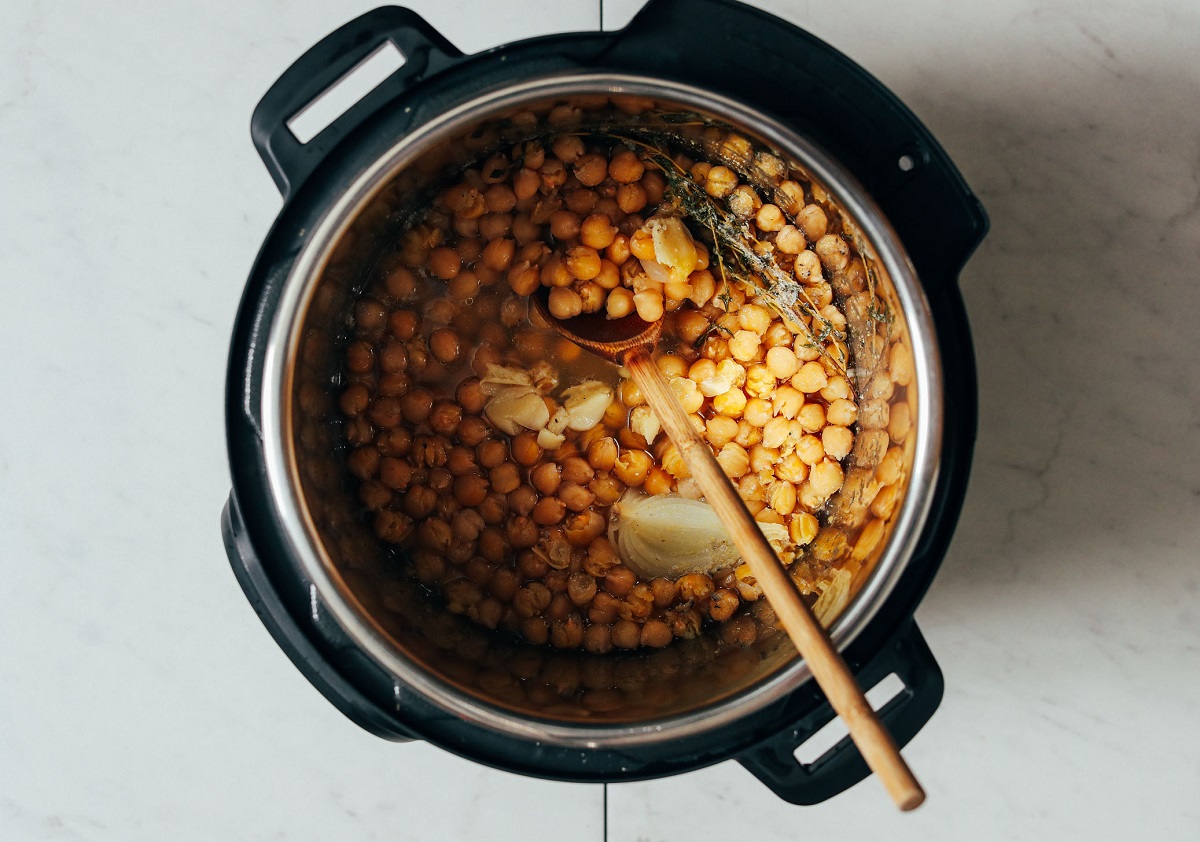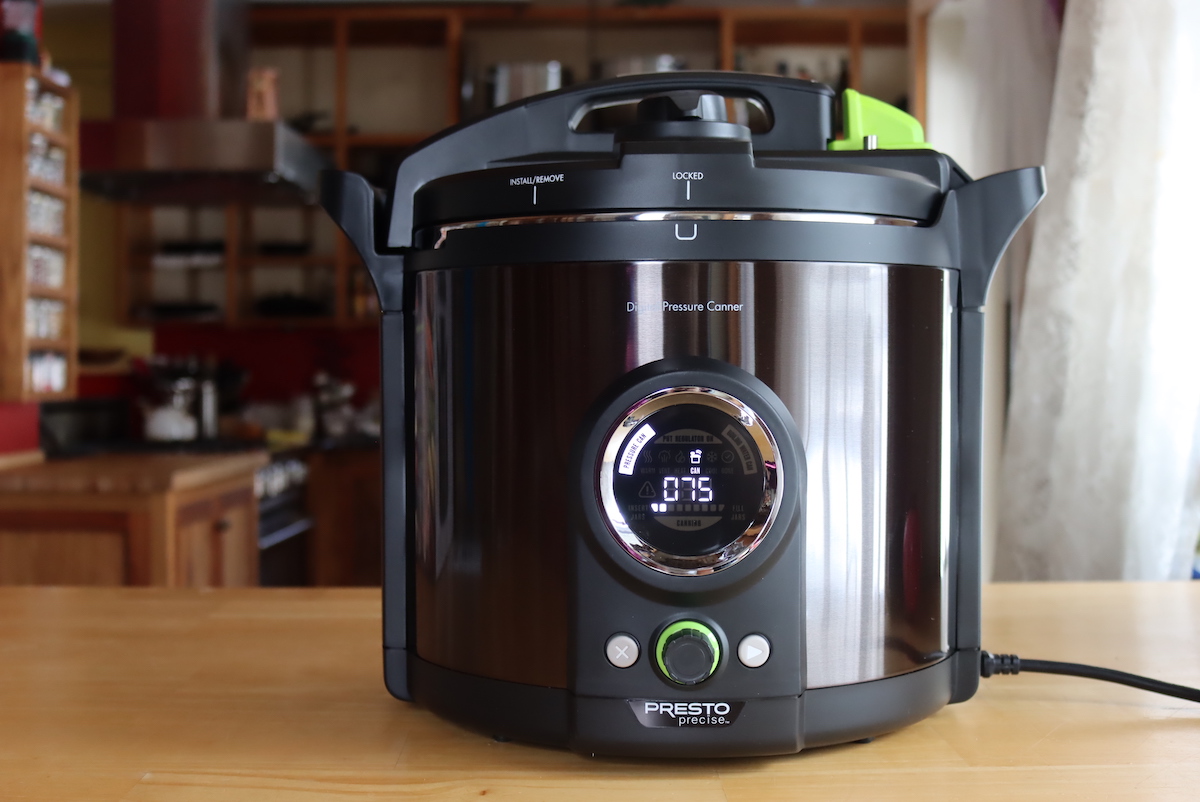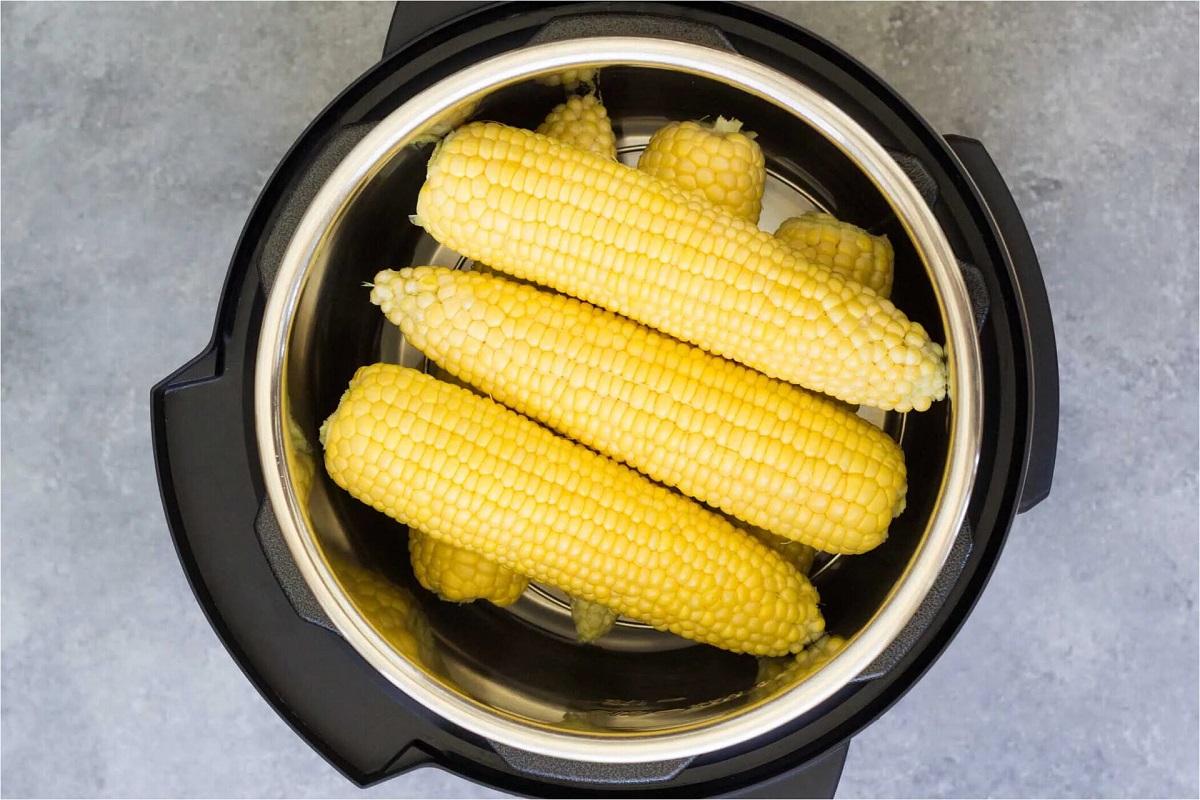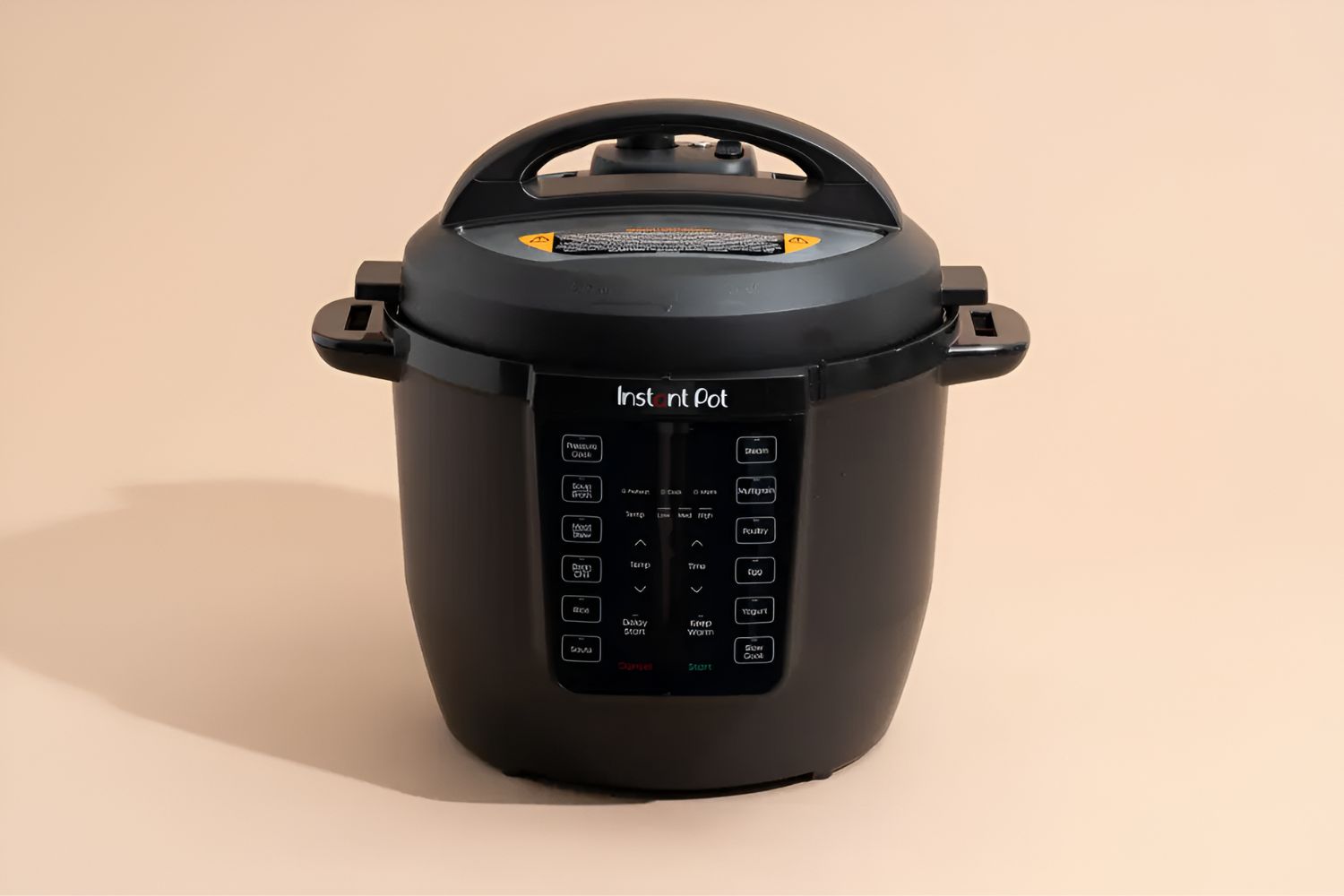Introduction
Welcome to the world of boiled peanuts! If you’re a fan of this Southern delicacy, you’re in for a treat. Boiled peanuts are a traditional snack that is both delicious and nutritious, packed with flavor and a perfect balance of softness and crunch. While traditionally cooked on stovetops or in slow cookers, using an electric pressure cooker offers a convenient and efficient way to achieve perfectly boiled peanuts in no time.
In this article, we’ll guide you through the process of boiling peanuts in an electric pressure cooker, from selecting the right cooker to testing the peanuts for doneness. Whether you’re a seasoned peanut-boiling pro or a newbie looking to try out this Southern favorite, you’ll find all the information you need right here.
To get started, let’s dive into the importance of choosing the right electric pressure cooker for boiling peanuts. While there are several options available on the market, not all cookers are created equal. It’s crucial to choose a cooker that not only has the necessary capacity but also provides the necessary features to ensure a successful peanut-boiling experience.
So, if you’re ready to embark on a delicious culinary adventure, grab your electric pressure cooker, and let’s get started on the journey to perfectly boiled peanuts.
Choosing the Right Electric Pressure Cooker
When it comes to boiling peanuts in an electric pressure cooker, selecting the right cooker is key. Here are a few factors to consider before making your purchase:
Capacity: The first thing to consider is the capacity of the cooker. Choose a cooker that can handle the quantity of peanuts you want to boil. Keep in mind that peanuts expand during the cooking process, so it’s better to opt for a slightly larger cooker to avoid any overflow.
Pressure Settings: Different electric pressure cookers offer different pressure settings. Look for a cooker that has a high-pressure setting for quick and efficient cooking. This will ensure that your peanuts cook thoroughly and retain their flavor and texture.
Timer and Delayed Start: Having a built-in timer and delayed start feature can be advantageous. This allows you to set the cooking time and start the cooker at a later time, giving you flexibility in managing your cooking schedule.
Easy Cleaning: Look for a cooker with a removable inner cooking pot for easy cleaning. Some cookers also have dishwasher-safe parts, making the cleanup process a breeze.
Additional Features: Consider any additional features that may enhance your cooking experience. Features like a sauté function for pre-cooking the peanuts or a keep-warm function to maintain the temperature after cooking can be beneficial.
Reading customer reviews and comparing different models can help you make an informed decision when choosing your electric pressure cooker. Once you have the perfect cooker, you’re ready to start preparing your peanuts for boiling.
In the next section, we’ll discuss the process of preparing the peanuts to ensure they are ready for the pressure cooking adventure.
Preparing the Peanuts
Before you can start boiling the peanuts in your electric pressure cooker, it’s important to properly prepare them. Follow these steps to get your peanuts ready for cooking:
- Choosing the Right Peanuts: Selecting high-quality raw peanuts is crucial for achieving the best results. Look for peanuts that are fresh, unshelled, and without any signs of mold or damage.
- Washing and Soaking: Start by rinsing the peanuts under cold water to remove any dirt or debris. Then, transfer them to a large bowl and cover them with water. Allow the peanuts to soak for at least 2 hours or overnight. Soaking helps to soften the peanuts and reduce cooking time.
- Draining and Rinsing: After the peanuts have soaked, drain the water and give them a final rinse under cold running water. This step removes any remaining dirt or impurities.
- Seasoning (Optional): If you prefer your boiled peanuts to have a little extra flavor, now is the time to add your preferred seasonings. Popular choices include spices like cajun, garlic powder, or red pepper flakes. Add the seasonings to the drained peanuts and mix well to evenly coat them.
- Add Water: Once your peanuts are seasoned (if desired), place them into the inner cooking pot of your electric pressure cooker. Add enough water to cover the peanuts completely. The water should reach about 1 to 2 inches above the peanuts.
With your peanuts properly prepared and seasoned (if desired), you’re all set to start cooking them in the electric pressure cooker. In the next section, we’ll guide you through the steps of cooking the peanuts to perfection.
Adding Flavors and Seasonings
One of the best things about boiling peanuts is the opportunity to infuse them with delicious flavors and seasonings. While plain boiled peanuts are delightful on their own, adding extra ingredients can elevate their taste and create a unique snacking experience. Here are some flavorful options to consider:
- Salt: The most basic and popular seasoning for boiled peanuts is salt. Add a generous amount of salt to enhance the natural flavors of the peanuts. The amount of salt can vary based on personal preference, but a good rule of thumb is to start with about 1-2 tablespoons per pound of peanuts.
- Spices: Get creative with spices to add a kick of flavor to your boiled peanuts. Popular choices include cajun seasoning, garlic powder, paprika, chili powder, or red pepper flakes. Experiment with different combinations or follow a tried-and-true recipe to find your favorite flavor profile.
- Herbs: Fresh or dried herbs can lend a refreshing and aromatic touch to your boiled peanuts. Consider adding herbs like bay leaves, rosemary, thyme, or even a sprig of mint. These herbs will infuse their fragrant flavors into the peanuts during the cooking process.
- Vegetables: For a twist on traditional boiled peanuts, you can add vegetables like onions, garlic, or peppers to impart extra flavor and a slight crunch. Sauté the vegetables before adding the peanuts to the cooking pot to release their flavors, or simply toss them in with the other ingredients.
- Liquid Seasonings: Enhance the taste of your boiled peanuts by incorporating liquid seasonings such as Worcestershire sauce, soy sauce, or hot sauce. These condiments provide a tangy or spicy element to the peanuts, creating a flavor explosion in every bite.
Remember to adjust the seasoning quantities based on personal preference and the amount of peanuts you’re cooking. Start with smaller amounts and taste the boiled peanuts occasionally during cooking to ensure the flavors are balanced.
With your chosen flavors and seasonings added, it’s time to cook the peanuts in the electric pressure cooker. In the next section, we’ll walk you through the cooking process step by step.
Cooking the Peanuts in the Electric Pressure Cooker
Now that your peanuts are seasoned and ready to go, it’s time to cook them in the electric pressure cooker. Follow these steps for perfectly boiled peanuts:
- Add Seasoned Peanuts: Transfer the seasoned peanuts, along with any added vegetables or herbs, into the inner cooking pot of your electric pressure cooker. Make sure the peanuts are evenly distributed, and the pot is not more than two-thirds full to allow room for expansion.
- Add Liquid: Pour enough water into the pot to cover the peanuts completely. The water should be about 1 to 2 inches above the peanuts. Keep in mind that the peanuts will absorb some of the liquid during cooking, so adding a bit extra is recommended.
- Secure the Lid: Place the lid on the electric pressure cooker and ensure it is properly sealed. Follow the manufacturer’s instructions to lock the lid in place securely.
- Select Pressure Cooking Setting: Set your electric pressure cooker to the high-pressure setting. This will ensure that the peanuts cook thoroughly and reach their desired softness.
- Set the Cooking Time: The cooking time can vary depending on the quantity of peanuts and your desired consistency. As a general guideline, set the cooking time to around 60 to 90 minutes for raw peanuts. Adjust the time accordingly for soaked peanuts or if you prefer softer or firmer texture.
- Start the Cooking Process: Once you’ve set the cooking time, start the electric pressure cooker. It will take some time for the cooker to reach the desired pressure, after which the cooking process will begin.
- Allow Natural Pressure Release: Once the cooking time is complete, let the pressure release naturally. This can take around 15 to 20 minutes. Avoid quick pressure release, as it can result in unevenly cooked peanuts.
Now that the peanuts are perfectly cooked, it’s time to check their doneness. In the next section, we’ll discuss how to test the peanuts to ensure they are tender and flavorful.
Releasing the Pressure
After the cooking time is completed, it’s important to release the pressure from the electric pressure cooker before opening the lid. Releasing the pressure is a crucial step to ensure your safety and prevent any accidents. Here are the methods to safely release the pressure:
- Natural Pressure Release (NPR): This method involves allowing the pressure to gradually release on its own. Simply leave the electric pressure cooker untouched after the cooking time is complete and let the pressure decrease naturally. This process usually takes around 10 to 20 minutes or longer, depending on the quantity of peanuts and the pressure cooker model.
- Quick Pressure Release (QPR): If you’re in a hurry or want to stop the cooking process immediately, you can opt for a quick pressure release. This is done by carefully turning the pressure release valve to the “Venting” position. Be cautious as hot steam will escape from the valve, so ensure you’re safely away from the steam release. The pressure will drop quickly, allowing you to open the electric pressure cooker lid once the float valve drops completely.
It’s essential to follow your electric pressure cooker’s manufacturer instructions regarding pressure release methods to ensure a safe cooking experience. Some pressure cookers may have specific requirements or recommendations for releasing pressure.
Once the pressure has been released, you can open the lid and check the doneness of the boiled peanuts. In the next section, we’ll discuss how to test the peanuts to ensure they are cooked to perfection.
Testing the Peanuts for Doneness
Testing the doneness of the boiled peanuts is essential to ensure they are cooked to your desired softness. Follow these steps to test the peanuts for doneness:
- Take a Sample: Using a slotted spoon or tongs, carefully remove a few peanuts from the electric pressure cooker.
- Cool and Test: Allow the peanuts to cool slightly before testing. Taste the peanuts to check their texture. They should be soft and tender but still have a slight firmness to the bite. If the peanuts are too hard, return them to the pressure cooker and cook for an additional few minutes.
- Adjust Cooking Time (if needed): If the peanuts are not fully cooked, simply return them to the pressure cooker and cook for a few more minutes. Repeat the process of releasing the pressure and testing for doneness until the peanuts are cooked to your liking.
- Soaked Peanuts: If you soaked the peanuts prior to cooking, they will require less cooking time compared to raw peanuts. Keep this in mind when testing for doneness.
- Remember Texture Preference: The cooking time can vary based on personal preference. Some prefer their boiled peanuts to be softer and more tender, while others prefer them to retain a slight bite. Adjust the cooking time accordingly to achieve your desired texture.
Once the boiled peanuts are cooked to perfection, it’s time to serve and enjoy them. In the next section, we’ll discuss serving suggestions and tips for storing the boiled peanuts.
Serving and Storing the Boiled Peanuts
Now that your boiled peanuts are ready, it’s time to serve them and enjoy their flavorful goodness. Here are some serving suggestions and tips for storing:
- Serving Warm: Boiled peanuts are traditionally served warm, straight from the pressure cooker. Use a slotted spoon or tongs to remove the peanuts from the pot, allowing excess liquid to drain off. Serve them in a bowl or on a platter, allowing everyone to dig in and enjoy.
- Serving Cold: If you prefer chilled boiled peanuts, you can refrigerate them for a couple of hours before serving. The cooling process will enhance the flavors and provide a refreshing snack option, especially on a hot summer day.
- Accompaniments: Boiled peanuts are delicious on their own, but you can also serve them with various accompaniments. Popular options include a side of pickles, slices of fresh tomato, or a dollop of hot sauce for an extra kick. Get creative and experiment with different combinations to find your perfect pairing.
- Storage: If you have any leftover boiled peanuts, store them in an airtight container in the refrigerator. They can be kept for up to a week. Make sure to discard any peanuts that appear spoiled, have an off smell, or have changed in texture.
- Reheating: When reheating boiled peanuts, you can either microwave them for a short time or gently warm them on the stovetop. Be cautious not to overheat them, as this can make the peanuts mushy.
- Freezing: If you have a large batch of boiled peanuts or want to save them for later, you can freeze them. Place the cooled peanuts in a freezer-safe bag or container and store them in the freezer for up to three months. Thaw the frozen peanuts in the refrigerator before reheating.
Whether you serve them at a party, enjoy them as a snack, or incorporate them into your favorite recipes, boiled peanuts are a versatile and delicious treat.
Now that you have all the information you need to boil peanuts in an electric pressure cooker, it’s time to put your newfound knowledge into practice. Grab your ingredients, follow the steps, and enjoy the delightful flavors of perfectly boiled peanuts!
Conclusion
Boiling peanuts in an electric pressure cooker offers a convenient and efficient way to enjoy this Southern delicacy. By choosing the right cooker, preparing the peanuts, adding flavors and seasonings, cooking them in the pressure cooker, releasing the pressure, testing for doneness, and serving or storing them, you can create a delicious and satisfying snack.
Remember, selecting a cooker with the right capacity, pressure settings, and additional features will ensure a successful peanut-boiling experience. Preparing the peanuts by washing, soaking, and seasoning them allows for maximum flavor infusion. Adding flavors like salt, spices, herbs, vegetables, and liquid seasonings allows you to tailor the taste to your preference.
When cooking the seasoned peanuts in the electric pressure cooker, ensuring proper pressure and cooking time is crucial. Releasing the pressure safely provides a smooth and hassle-free process. Testing the peanuts for doneness helps achieve the desired texture, and serving them warm or cold with accompaniments enhances the overall experience.
Remember to store any leftovers properly, either in the refrigerator or freezer, and enjoy them at a later time. Whether you’re snacking on boiled peanuts at a party, pairing them with your favorite foods, or incorporating them into recipes, they are sure to satisfy your taste buds.
So, grab your electric pressure cooker, select some high-quality peanuts, and embark on this culinary adventure. With the right techniques and a little bit of experimentation, you’ll be enjoying perfectly boiled peanuts in no time. Happy cooking!







